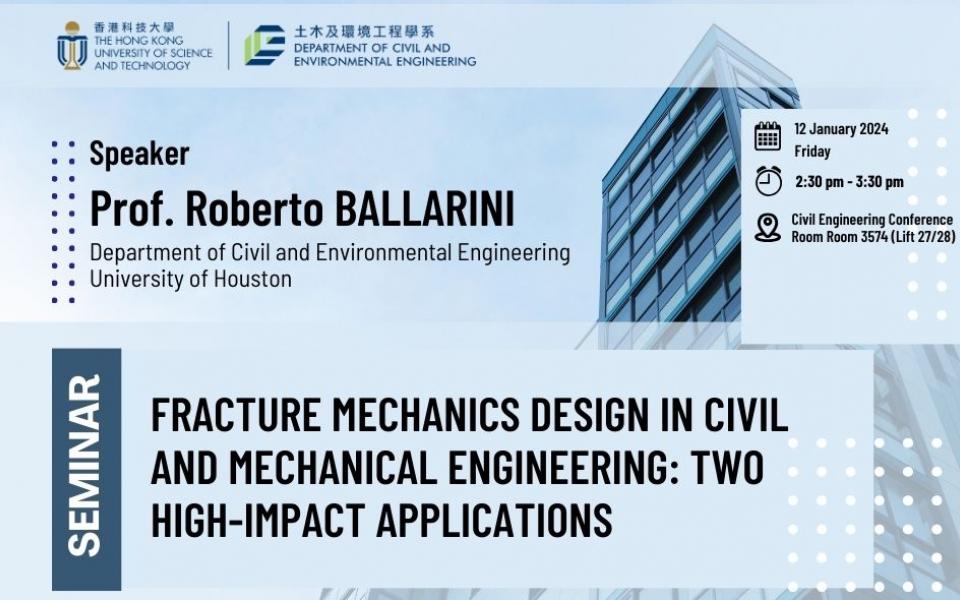Civil Engineering Departmental Seminar - Fracture Mechanics Design in Civil and Mechanical Engineering: Two High-Impact Applications
Supporting the below United Nations Sustainable Development Goals:支持以下聯合國可持續發展目標:支持以下联合国可持续发展目标:
Fracture Mechanics Design in Civil and Mechanical Engineering: Two High-Impact Applications
Two examples are presented that demonstrate the impact of fracture mechanics on design procedures for Civil and Mechanical Engineering; the prediction of the load-carrying capacity of anchors embedded in concrete (and other quasi-brittle materials), and the characterization of benign versus catastrophic failure of thin-rim gears.
In the 1980’s it became evident that the load-carrying capacity of steel anchors embedded in concrete, for cases where the failure is a result of the pullout of a concrete cone, is directly related to the concrete fracture toughness and not to its compressive/shear/tensile strengths. Experimental, theoretical and computational studies made it abundantly clear that pulling an anchor out of a concrete matrix amounts to performing a fracture toughness test, and that the load-carrying capacity is not proportional to the surface area of the pullout cone. This led to the replacement of strength theory-based design formulas for the load-carrying capacity of anchors with those derived using linear elastic fracture mechanics (LEFM); a precedent for the application of fracture mechanics to the design of concrete structures.
Up to the early 1990’s the design guidelines aimed at mitigating catastrophic fracture of thin-rim gears relied on simplified stress analysis procedures. To better understand the effects of rim thickness on potential failure types, computational and experimental fracture mechanics-based simulations were conducted whose goal was to determine whether cracks grew through the tooth (leading to benign failure) or through the rim (resulting in catastrophic failure). Linear elastic fracture mechanics-based simulations were shown to be consistent with experimentally observed failure modes and crack propagation lifetimes, and have since then provided a mechanistic basis for the improved design of such critical components.
Dr. Roberto Ballarini is Thomas and Laura Hsu Professor and Chair of the Civil and Environmental Department at the University of Houston. Ballarini’s multidisciplinary research focuses on the development and application of theoretical, computational and experimental techniques to characterize the response of materials to mechanical, thermal, and environmental loads. He is particularly interested in formulating analytical and computational models for characterizing fatigue and fracture of materials and structures. Ballarini’s research has been applied to problems arising in civil engineering, mechanical and aerospace engineering, materials science, microelectromechanical systems, biological tissues and prosthetic design. He has published more than 120 papers in refereed journals, including Science and Nature, and several of his research projects have been featured in the popular press, including the New York Times Science Times, American Scientist, Business Week, Financial Times, and Geo. Ballarini a Distinguished Member of ASCE, Fellow of ASME and of the Engineering Mechanics Institute, is Past-President of the ASCE Engineering Mechanics Institute and served as Editor of the ASCE Journal of Engineering Mechanics. He is recipient of the 2019 ASCE Raymond D. Mindlin Medal in recognition of outstanding research contributions to applied solid mechanics.
